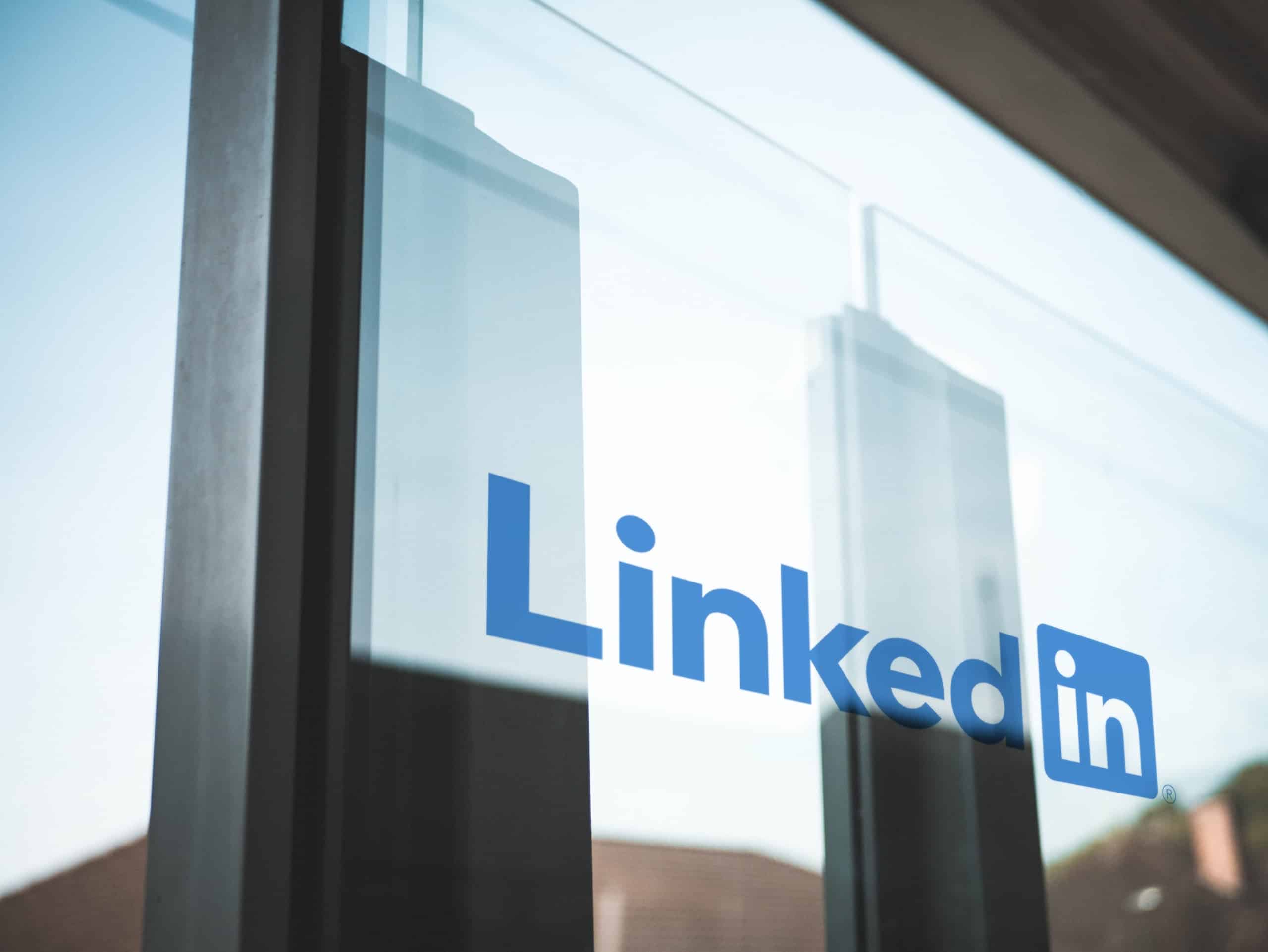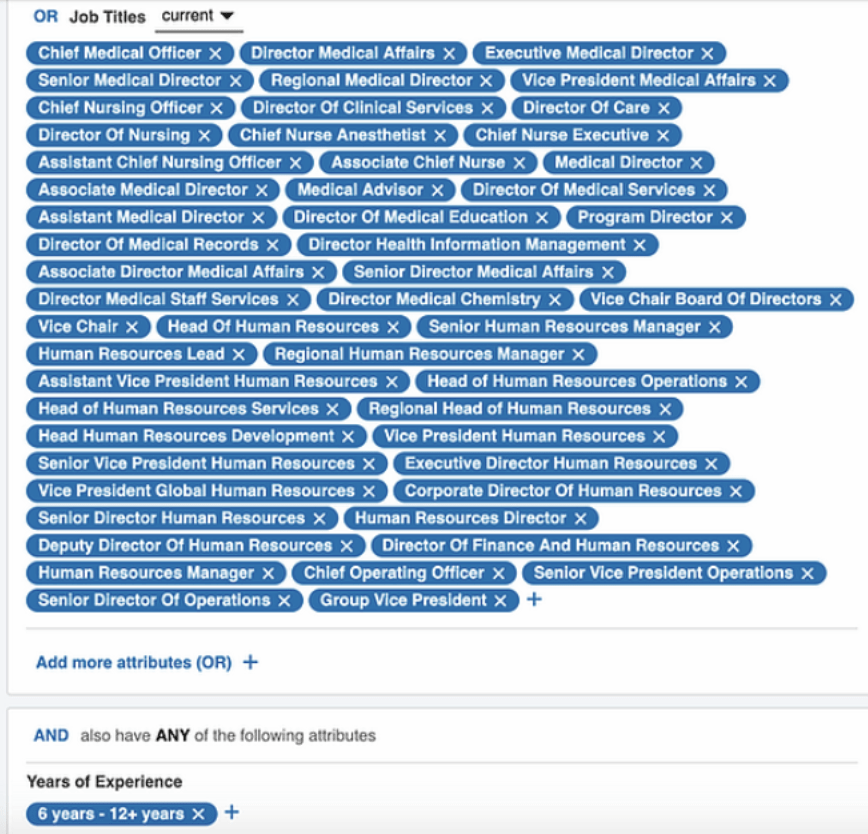LinkedIn can be a very effective social media platform for promoting your healthcare practice. Over 45% of healthcare professionals are on Linkedin, making it a great channel for building your professional network, connecting with other practices, and healthcare industry leaders.

Photo by inlytics | LinkedIn Analytics Tool on Unsplash
In February 2021, LinkedIn had 740 million users worldwide, often executives, thought-leaders, and decision-makers. Because of this, LinkedIn has become one of the best channels to network with like-minded professionals, build your personal brand, and subsequently grow your healthcare practice.
In this article, I will share my experience as a former Linkedin employee (and now an owner of my own marketing company) on how to grow your healthcare practice with Linkedin. We will explore tactics, and Linkedin features that will allow you to drive awareness for your practice, generate referrals, and measure your healthcare marketing campaigns’ ROI.
How to drive brand awareness for your healthcare practice
1. Create a LinkedIn company page for your practice
The first step to generating leads via LinkedIn is by creating a strong LinkedIn company page. A good company page will help establish your brand’s presence on the platform. Your company page is the first thing a prospect sees when searching for your practice on LinkedIn, so it’s important to make a strong first impression.
Ensure that your profile contains keywords that are important to your field. This will increase your chances of getting seen by your prospects, most likely doctors, clinics, hospitals, and other practices. When your LinkedIn page’s value proposition is clear, prospects who need your services can easily locate you and refer you to others.
After creating your company page, ensure that you write a compelling ‘About’ section. This section must have a strong value proposition.
Some of the common problems that healthcare practices face are referral leakage and unclear scheduling processes. Having a detailed ‘About’ section will help combat these issues. These are important questions you should answer when writing your ‘About’ section:
- Who are you?
- Where is your practice based?
- What services do you offer?
- What are your brand values and mission?
- How can people contact you to learn more about your business?
- What is your scheduling process?
2. Add connections to your network
Add connections within the platform to broaden your network. Every new connection you make is a potential lead or referral partner. You have access to a combination of search filters. The filter criteria you can use in searching are:
- Connections (1st degree, 2nd degree, 3rd degree)
- Industries (In this case, you can include the industry you are in or want to target)
- Location
- Current companies
- Past companies
- Language
- Services, etc
If you are looking to generate sales and partnerships, the advanced or premium search tools on LinkedIn are the best options. LinkedIn offers two premium search tools: LinkedIn Sales Navigator and LinkedIn Recruiter. For your healthcare practice, the Sales Navigator is the best option. Additional filters you will get using Sales Navigator include:
- Title
- Industry
- Company Headcount
- Seniority Level
- Geography
- Keywords
- Function
Tip: Be strategic when making connections. Instead of adding everyone on the list, ensure that you connect with people that are relevant to your business.
3. Create showcase pages
A Showcase Page is an extension of your LinkedIn page. They are designed to spotlight the specific services or products your healthcare practice offers. LinkedIn users can follow any Showcase Page of their choice without following its main LinkedIn page.
A Showcase Page will allow your healthcare practice to promote services that are specific to the users following the page.
For example, if your healthcare practice offers multiple services, you can create a Showcase Page for each service. Prospects can follow any page that suits their pain points. You can then create personalized content for each page.
To create a showcase page, click on the drop-down on the “Edit” button and click on “Create a Showcase Page.” You can create up to 10 Showcase Pages.
Here are some best practices when creating Showcase Pages:
- Choose an unambiguous name: The name you pick for the page must be clear. The smaller your healthcare practice, the more specific the name you choose. This will help people clearly understand what the page is about. A best practice is to include your company name and a short descriptor in front.
- Tell people what the page is about: Use the 120 characters tagline to explain what kind of content you will be sharing on the page.
- Ensure that you fill out every piece of information: LinkedIn reports that pages with complete information receive 30% more weekly views.
- Regularly post page-specific content: Similar to your main LinkedIn page, you should also have a content strategy for your Showcase Pages. Regularly post personalized content for each page. This will help increase your user engagement rate.

4. Join Groups
LinkedIn groups are “places for professionals in the same industry or with similar interests to share their insights and experiences, ask for guidance, and build valuable connections.”
Businesses can also take advantage of LinkedIn groups. Joining or creating a LinkedIn group will give you a forum to connect with your target audience. You will be able to establish a relationship with your customers and prospects before moving them down your sales funnel.
Avoid spamming groups to promote your healthcare practice. Instead, share valuable insights and content. This will help you build more quality interactions with prospects and also boost your healthcare practice online reputation.
Here are some of the popular group recommendations for people in the medical space:
- The Health & Wellness Networking Group
- Digital Health
- Healthcare Executives Network (HExN)
- Healthcare Industry Professionals Group
- Pharmaceutical, Biotech, Medical, & Healthcare Professionals
5. Collect recommendations
Your LinkedIn profile should tell a potential client or referral partner that your practice is effective at what they do. To easily convince people, you need endorsements from other physicians and healthcare professionals on the platform. This is where LinkedIn recommendations come into play. They serve as validation for your brand.
Since the recommendations you receive will be visible on your profile, you want to make sure they are worth it. Be proactive and create a list of notable physicians or health organizations in your industry that you want to reach out to.
Tip: After creating the list of people you want to contact, do not send out recommendation requests directly on LinkedIn. Most people ignore the messages they receive on LinkedIn. Instead, send them an email.
If the person accepts to write a recommendation, go to LinkedIn and request the recommendation. After they have written their recommendation, you can choose to show it on your profile or discard it.
6. Regularly post updates
It’s important to post updates on LinkedIn regularly. Why?
- Your connections are notified each time you publish a post. This will ensure that you are on top of the mind of your target audience.
- Your network can share your updates with its audience. This will increase the reach and visibility of your brand.
- Your chances of getting featured on LinkedIn Pulse also increase. Getting featured on LinkedIn’s publication will exponentially increase your traffic and engagement.
- Publishing valuable content also positions you as an authority in your industry.
Tip: Ensure to craft captivating and engaging headlines for your posts. This will help you stand out from the sea of content uploaded to the platform daily. Also, add relevant keywords to your headlines and content. This will help with SEO.
Along with texts and images, you should also share video updates. Video is the most re-shared form of content on LinkedIn. LinkedIn users are 20x more likely to re-share a video post.
How to generate referrals for your healthcare practice through LinkedIn Advertising
LinkedIn advertisements offer several ad formats and targeting options that make it easy to grow your healthcare practice on the platform.
Targeted advertising ensures that your promotions will be received by an audience interested in the services you have to offer. You can reach over 8.6mm active healthcare practitioners on LinkedIn.
There are several ways to market your healthcare practice, but one of the most effective ways is obtaining referrals from other physicians. The targeting options on LinkedIn make it easy to acquire these referrals. Compared to Instagram, Twitter, and Facebook, LinkedIn already has valuable information like where users work, their positions, seniority level, and more. This data makes it easier to target and reach your ideal prospects with your ad campaigns.
With LinkedIn targeted ads, you can generate high-quality leads. These leads can become potential referral partners.
Here are the key steps for effective LinkedIn ad targeting:
1. Build your ideal target audience
You can choose your audience from a wide range of targeting options:
- Company: Company Size, Company Name, Company Industry, Company Followers, Company Connections
- Demographics: Age and Gender
- Education: Degrees, Fields of Study, and Member Schools
- Job Experience: Job Title, Job Seniority, Job Function, Years of Experience, and Member Skills
- Interests: Groups and Member Interests
Tip: If you target using job titles, you should add as many job titles as possible. Job titles vary amongst companies. A Chief Medical Officer might be referred to as Executive Medical Director in another company. You can select up to 100 job titles per campaign. Ensure that you take full advantage of it to avoid missing out on your target audience.
3. Take advantage of ABM lists
If you have any email and/or company lists of prospects, you can upload them to LinkedIn, and LinkedIn will match back to each person and company’s LinkedIn profile. This is a precious tool to use for targeting a specific set of accounts that you are targeting.
4. Increase your reach using lookalike audiences
No matter the amount of targeting criteria you add when setting up the ad, it is possible to exclude important people from your campaign. LinkedIn’s lookalike audiences allow your ads to reach people who are similar to your target audience. As a result, you will be able to scale your campaign’s reach and increase the chances of generating more high-quality leads.
Lookalike audiences work best when you have a source audience. A source audience is an audience that represents the kind of individuals you want to target. In the case of your practice, this will be your email list. The lookalike audiences feature will automatically find the LinkedIn profiles of people similar to those on your list. This will help you reduce your lead acquisition costs, as it targets your ideal customer.
5. Create A/B tests for your ads
To ensure that you get optimal conversion rates, regularly A/B tests your ads. Create two similar campaigns with varying targeting parameters. For example, you can test job title vs. job function. You can also test out different content pieces (i.e., whitepaper versus a webinar). Additionally, you can test running promotions against new campaigns to see which one has the maximum impact on key metrics like click-through rates, referrals, patient acquisition, and new patient calls. These tests will let you know which options resonate best with your audience.

Image by Gerd Altmann from Pixabay
Measuring the ROI of your healthcare campaigns
Measuring your return on investment (ROI) is an important part of any successful digital marketing campaign. To do this effectively, you will need a CRM to keep track of new leads and referrals directly attributed to your Linkedin marketing activities.
As a medical professional who already uses ReferralMD, you are in an excellent position to integrate Linkedin marketing into your existing outreach and referral management workflow. What’s more important, ReferralMD is a HIPAA compliant Physician-to-Physician (and not only) Management System, so the medical data of referred individuals are kept confidential and stored securely.
Final thoughts
I had the privilege to be involved in some incredible digital marketing campaigns in the healthcare and pharmaceutical industries throughout my career.
When healthcare campaigns are targeted properly, healthcare practices can achieve higher than average benchmarks in conversions, grow their followers, and increase customer engagement.
No matter the size of your healthcare practice, LinkedIn can help you reach new potential clients and increase your brand awareness. The key is to deliver value on the platform consistently. Growing on LinkedIn isn’t a day’s job, but with consistent effort, the platform can be a useful tool for generating high-quality leads.












